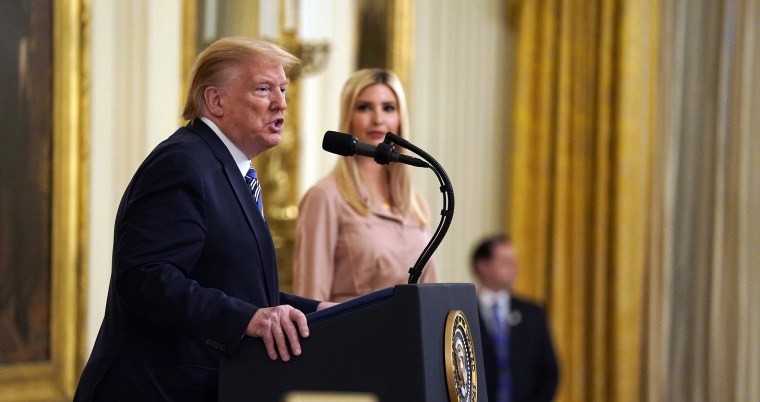It was among the most unfortunate of Donald Trump's claims about the coronavirus crisis. Pointing to the modest number of positive cases in the United States, the president argued on Feb. 26, "[Y]ou have 15 people, and the 15 within a couple of days is going to be down to close to zero." He added at the time that this amazing trend line was a direct result of the "good job" he said Team Trump was doing.
That was, of course, tragically wrong. Two months later, the 15 cases in the United States now stands at over 1 million cases.
Asked in early April to reflect on his comments from February, Trump told reporters, "[Y]ou have to understand, I'm a cheerleader for this country.... I think a president has to be a cheerleader for their country." By this reasoning, "cheerleading" is a legitimate excuse for saying things that aren't true and giving the public false hope during a public-health crisis.
At a White House event yesterday, a reporter reminded the president of his quote from February and asked, "How did we get from your prediction of zero to 1 million?" Trump replied:
"Well, it will go down to zero, ultimately."
Oh. So, Trump thinks he was ... right?
In case there are any lingering doubts, the president said the total number of U.S. cases would be close to zero "within a couple of days," not "within a couple of years." Trump probably would've been better off just chalking up his mistake to "sarcasm" again.
At the same event yesterday, the president added, "I think what happens is, it's going to go away. This is going to go away. And whether it comes back in a modified form in the fall, we'll be able to handle it."
Part of the problem with this Trump rhetoric is that it's once again at odds with public-health experts. Indeed, as the New York Times reported, soon after yesterday's event, Dr. Anthony Fauci explained that the virus "is not going to disappear from the planet" and will almost certainly be coming back. "In my mind, it's inevitable that we will have a return of the virus or maybe even that it never went away," Fauci said, adding that the United States "could be in for a bad fall" without an effective treatment.
The other part of the problem is the familiarity of the rhetoric. Trump's mantra from yesterday -- "This is going to go away" -- is practically word-for-word identical to his rhetoric from February and March.
If pandemics were responsive to rhetorical presidential repetition, Trump's misplaced happy talk would be welcome. But since viral outbreaks are indifferent to political optimism, perhaps the president should think of something different to say.

